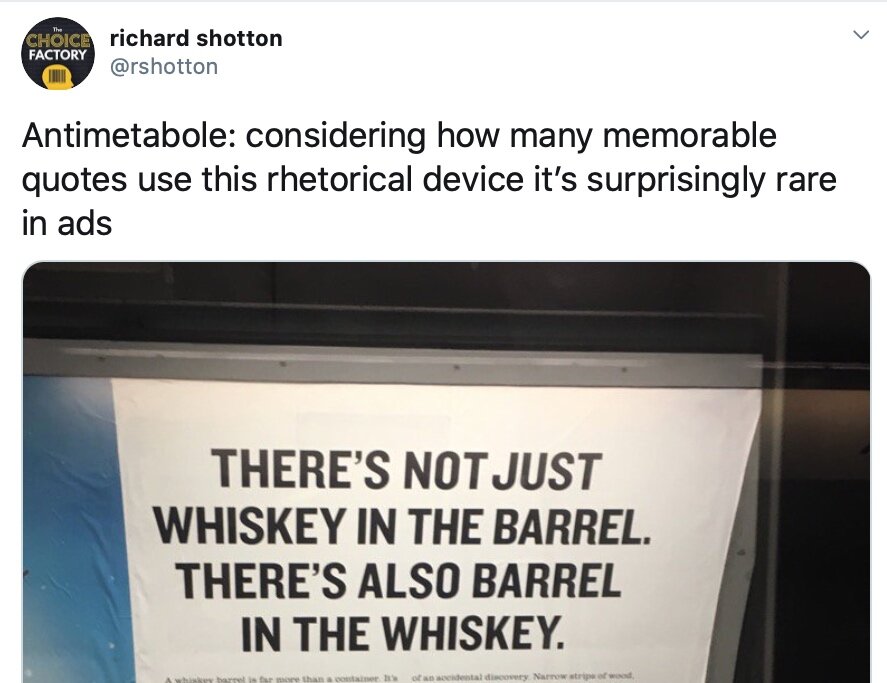Pump up the (word) jam: 5 more examples of rhetorical devices
A few weeks ago, I gave you a handful of rhetorical devices, guaranteed to turn your writing up to eleven.
This is the encore.
Here are 5 more examples of rhetorical devices, each one a metaphorical kick in the mental gonads. In a good way.
Stop messing around and start scrolling…
1) Antimetabole
Antimetabole (anty-metab-olly) is a nifty device for switching shit up on your reader and really making them think.
You start by writing a short clause then follow it with a second clause in which the same words appear but in reverse order.
This is some Gandalf-sounding shit, eh?
An example would be this Jack Daniels ad that Richard Shotton shared…
2) Antiphrasis
This one’s for all my fellow sarcastic bastards.
Antiphrasis is essentially the Ancient Greek equivalent of sarcasm — it is saying the exact opposite of what you mean but in such a way that your intent is glaringly obvious.
Fun fact: ‘antiphrasis’ is also the name of a German black metal band.
3) Epizeuxis
Here’s a close cousin of repetition and diacope. Epizeuxis (eppy-zooks-is) is the use of one word several times, in quick succession, in the same sentence.
Like so…
Boom! Shake, shake, shake the room.
Tick, tick, tick, tick boom!
If it worked for the Fresh Prince, it’ll work for you — he never wrote a whack jam.
4) Enallage
This is one of my favourite devices because it’s essentially a colloquialism. It occurs when you make a deliberate grammatical error in your writing.
Let’s take Apple’s slogan, for example.
Not correct. NOT CORRECT AT ALL.
Sticks though, eh? And you can’t deny that it is indeed different. Because it’s wrong.
Whatever, man.
5) Parallellism
I’ve written about parallelisms before on the Jot Jot Boom blog because they sound sexy as FUCK.
To write a parallelism, you need several matching elements or structures in your sentence. Like this Oral-B ad, for example.
The first clause starts with ‘gentle on’, then we mirror it in the second clause with ‘tough on’.
What a work of art, eh? So fresh.





